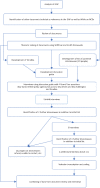The process of prioritization of non-communicable diseases in the global health policy arena
- PMID: 31199439
- PMCID: PMC6736081
- DOI: 10.1093/heapol/czz043
The process of prioritization of non-communicable diseases in the global health policy arena
Abstract
Although non-communicable diseases (NCDs) are the leading cause of morbidity and mortality worldwide, the global policy response has not been commensurate with their health, economic and social burden. This study examined factors facilitating and hampering the prioritization of NCDs on the United Nations (UN) health agenda. Shiffman and Smith's (Generation of political priority for global health initiatives: a framework and case study of maternal mortality. The Lancet 370: 1370-9.) political priority framework served as a structure for analysis of a review of NCD policy documents identified through the World Health Organization's (WHO) NCD Global Action Plan 2013-20, and complemented by 11 semi-structured interviews with key informants from different sectors. The results show that a cohesive policy community exists, and leaders are present, however, actor power does not extend beyond the health sector and the role of guiding institutions and civil society have only recently gained momentum. The framing of NCDs as four risk factors and four diseases does not necessarily resonate with experts from the larger policy community, but the economic argument seems to have enabled some traction to be gained. While many policy windows have occurred, their impact has been limited by the institutional constraints of the WHO. Credible indicators and effective interventions exist, but their applicability globally, especially in low- and middle-income countries, is questionable. To be effective, the NCD movement needs to expand beyond global health experts, foster civil society and develop a broader and more inclusive global governance structure. Applying the Shiffman and Smith framework for NCDs enabled different elements of how NCDs were able to get on the UN policy agenda to be disentangled. Much work has been done to frame the challenges and solutions, but implementation processes and their applicability remain challenging globally. NCD responses need to be adapted to local contexts, focus sufficiently on both prevention and management of disease, and have a stronger global governance structure.
Keywords: Non-communicable diseases; chronic diseases; global health; low- and middle-income countries; policy.
© The Author(s) 2019. Published by Oxford University Press in association with The London School of Hygiene and Tropical Medicine.
Figures
References
-
- Beaglehole R, Bonita R, Alleyne G. et al. 2011. UN high-level meeting on non-communicable diseases: addressing four questions. The Lancet 378: 449–55. - PubMed
-
- Beaglehole R, Bonita R, Horton R. et al. 2011. Priority actions for the non-communicable disease crisis. The Lancet 377: 1438–47. - PubMed
-
- Beran D, Chappuis F, Cattacin S. et al. 2016. The need to focus on primary health care for chronic diseases. The Lancet. Diabetes & Endocrinology 4: 731–2. - PubMed
MeSH terms
LinkOut - more resources
Full Text Sources
Medical



